It’s easy to assume your roof’s only job is to keep water out, but what happens to the water once it hits the roof matters just as much. That’s exactly why we’re here to talk about downspouts and foundation health. Poor drainage can lead to compromised structural integrity, water-related issues, cracks in your home’s foundation, and even health problems caused by hidden moisture. At Maupin Roofing, we make sure everything is flowing where it should, so your home stays strong from the roof down.
How Do Gutters and Downspouts Prevent Foundation Damage?
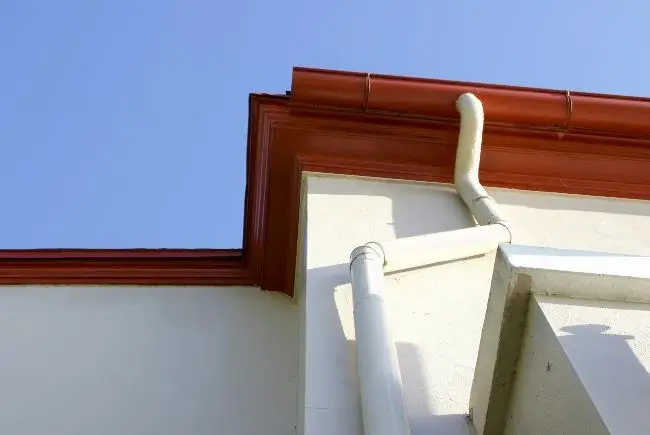
Before we talk about damage, let’s get one thing straight: gutters and downspouts work as a team. Gutters catch the water running off your roof, and downspouts send that water away from your home. The goal is to prevent water from pooling near your foundation.
Water Can Cause Problems
Rainwater might seem harmless when it’s falling gently, but gallons of it pouring off your roof during a storm is a different story. If that water isn’t redirected away from the foundation, it can leave excess water and cause costly damage. Over time, that saturation can cause the soil to shift, swell, or even erode, none of which is good news for the concrete holding your house up.
In Oklahoma, where we get heavy rain one month and dry spells the next, this cycle of expanding and contracting soil can stress your foundation out. And once your foundation starts shifting, your walls, floors, and roof can start moving with it.
What Happens Without Downspouts?
Without downspouts to ensure proper drainage (or with short, clogged, or broken ones), water gets dumped right at the edge of your home. That’s like pointing a firehose at the base of your house. Even a well-built foundation will have a hard time standing up to that kind of pressure. Cracks, leaks, and even basement flooding can happen as a result.
Good Drainage Leads to Foundation Protection
Properly installed gutters, downspouts, and drainage systems carry water several feet away from your home, usually at least 4–6 feet, sometimes more, depending on your yard’s slope. With the right setup, you get to direct water properly, leaving it with no chance to pool around the base of your house and preventing issues like basement flooding. This means fewer foundation problems in the years to come.
How Downspouts Help Protect Your Roof
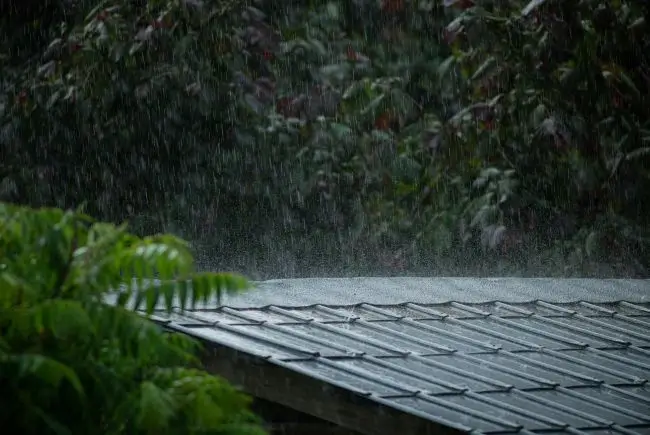
It might seem like the roof and the foundation are on opposite ends of the house (and they are), but that doesn’t mean they’re not connected. Your downspouts actually play a role in protecting both.
Less Water Backup Means Less Roof Damage
If water can’t drain properly through your gutters and downspouts, it backs up. That standing water can seep under shingles, rot your roof deck, and even leak into your attic. As time passes, you may notice sagging gutters, deteriorating fascia boards, or roof leaks after every big storm.
Downspouts give rainwater somewhere to go. They help keep water moving off your roof, into your gutters, and down and out where it belongs.
Ice Dams in the Winter
In colder months, improper drainage can cause ice dams to form. These usually happen when water gets trapped in your gutters and freezes overnight. That ice pushes water back up onto your roof, where it can slip under shingles and cause leaks. Keeping downspouts clear and working helps prevent that whole mess from happening.
Reduces Soil Erosion and Mold and Mildew Growth
Downspouts help manage roof runoff by directing rainwater away from your home’s foundation. This prevents soil erosion, which can cause the ground to shift and affect your roof over time.
Proper drainage also reduces the risk of water infiltration as it prevents moisture from seeping into your walls or attic. That trapped moisture can lead to mold and mildew growth, which isn’t just bad for your roof but your whole home’s health.
The Downspout–Foundation Connection
The base of your home is surrounded by soil. That soil expands and contracts based on how much water it’s holding. If your downspouts aren’t channeling rainwater away far enough, that soil stays wet, especially in Oklahoma’s clay-heavy areas. Over time, that repeated swelling and shrinking, as well as the hydrostatic pressure that comes with it, causes stress on your foundation walls. Cracks form, water starts to sneak in, mold shows up, and before you know it, you’re dealing with thousands of dollars in repairs.
When you channel water well away from your home, downspouts reduce the pressure against your foundation walls and keep your soil stable.
Common Signs Your Downspouts May Be Causing Problems
Downspouts don’t need to be completely broken to cause trouble. Sometimes the issues are a little more subtle, though there are also cases when they’re impossible to ignore. These are some common warning signs:
1. Water Pooling Near the Foundation
After a rainstorm, take a walk around your house. If you notice puddles forming along the perimeter, or worse, soggy soil that doesn’t dry out, it might be because of misaligned or clogged downspouts that aren’t sending water far enough away.
2. Overflowing Gutters or Downspouts
If water is pouring over the sides of your gutters during a storm, it could be a clog in your downspouts or a blockage at the top where they connect to the gutters. Either way, it’s water that’s not being directed where it should go.
3. Water Stains or Erosion Near Downspout Areas
If the dirt near your downspouts is washing away, or you’re seeing mud splashed up on your siding, it’s a sign your downspouts are dumping too close. This kind of erosion can gradually damage landscaping and your foundation.
4. Cracks in Your Foundation or Basement Walls
Tiny foundation cracks might seem like no big deal at first. But if you start seeing cracks that spread over time or notice water getting into your basement, it can lead to issues like mold growth and significant damage. Faulty downspouts, improper drainage, and poor installation of systems are often part of the cause.
Tips for Drainage System and Downspout Maintenance
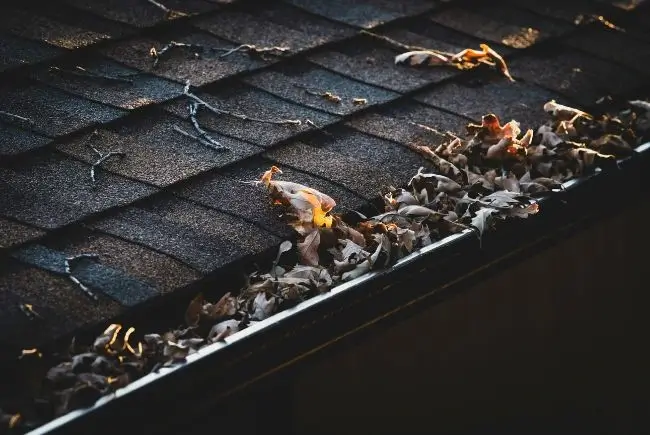
Taking care of your downspouts requires a little regular attention. A few simple habits can go a long way toward keeping your home dry and your foundation strong.
Clean Your Gutters (And Check the Downspouts Too)
Well-kept gutters prevent debris from blocking downspouts. Frequent cleaning and regular maintenance can keep rainwater flowing freely and help you prevent expensive repairs.
Check and clean your downspouts regularly at least twice a year (spring and fall are ideal), get up there and clear out leaves, twigs, and shingle grit. And after a big storm? Might be worth checking again. And don’t forget the downspouts themselves. Use a hose to flush them and make sure water flows out freely.
Use Downspout Extensions or Splash Blocks
Downspouts should carry water at least 4 feet away from your foundation. If your downspouts deposit water straight down or only go a foot or two out, consider adding extensions or splash blocks. Longer downspouts extend their reach and help guide water farther into your yard so it’s safely diverted, helping prevent water overflow and pooling near the foundation.
Flexible plastic extensions are a quick DIY fix, but for a more permanent solution, some homeowners opt for underground drains that connect to a French drain or stormwater system.
Add Gutter Guards
Want to cut down on gutter cleanouts? Gutter guards are worth considering. They’re designed to minimize debris accumulation by keeping out leaves and other debris before they cause problems. That also means your underground drainage systems are less likely to get clogged, saving you from headaches during heavy rains.
Check the Slope Around Your Home
Your yard should slope gently away from your home on all sides. Even the best downspout won’t help if the water flows right back toward your foundation. If you notice water collecting near your house despite working downspouts, you might need to regrade your yard to achieve the correct slope.
Inspect After Big Storms
After a heavy rain or windstorm, take a few minutes to walk around your property. Are your downspouts still attached? Did anything get knocked loose? Is water draining where it’s supposed to? Quick spot checks like these can catch issues early before they snowball into foundation damage.
When to Call a Professional
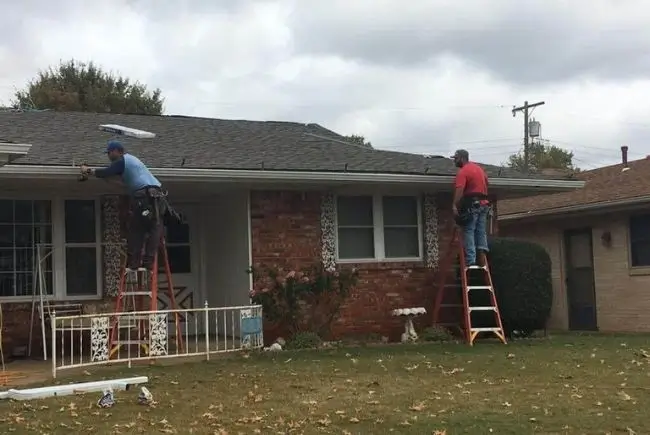
While some homeowners can handle regular gutter and downspout maintenance on their own, there are times when it’s best to bring in an expert. If your gutters aren’t functioning correctly, water might not be effectively diverted away from your home, which can lead to severe structural damage over time.
Professionals can perform regular inspections to make sure everything is working as it should. They’ll check that water can flow freely through your system and that it’s being properly managed from roof to ground. If issues like mold, mildew, or leaks are already present, a pro can also help prevent further damage, including potential respiratory issues caused by poor air quality indoors.
In short, when in doubt, don’t wait. Calling a professional can save you time, money, and stress down the line.
Prioritize Home Protection by Preventing Downspout and Foundation Issues With Maupin Roofing
Water has a way of finding weak spots, whether it’s around your foundation or inside your basement. That’s why it’s so important to have a proper design for your gutters, downspouts, and everything that connects to your storm sewer or French drains.
Good drainage helps prevent water damage, mold, and serious structural problems. And if something’s not working right, our home exterior services can get your water flow back on track before it leads to costly repairs.
Contact us today to get started!

Green Roofs for Commercial Properties: Suitability, Types & Benefits
Green roofing systems replace or layer over traditional materials with soil, native plants, and engineered drainage systems that allow the roof to become a living

Boosting Curb Appeal with Exterior Colors: 12 Color Combos to Try
Before anyone notices your landscaping or your roofline, they notice color, which is why boosting curb appeal with exterior colors is such a powerful move.
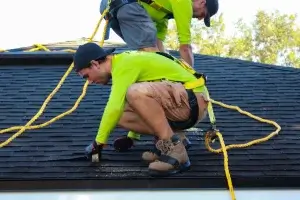
Residential Roof Maintenance Tips for Longevity
Your roof does more than cap off your home. It shields everything beneath it from Oklahoma’s heat, high winds, ice storms, and heavy rain. That’s
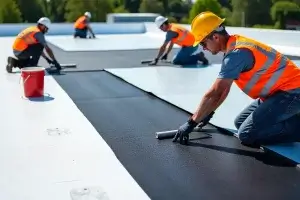
Modified Bitumen Roofs for Commercial Use: What to Know
Modified bitumen roofs for commercial use have become one of the most trusted options for flat and low-slope buildings for over a century. At Maupin
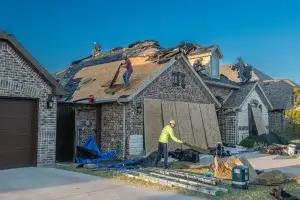
New Roof Installation Guide for Homeowners
As pros in the roofing industry, we know what really goes into a well-built roof and what can go wrong when corners are cut. A
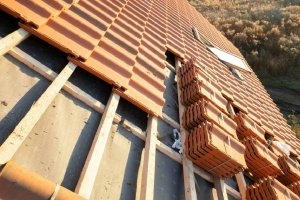
Best Time to Install a New Roof in Oklahoma
Something we often see is homeowners waiting too long to replace a worn-out roof, only to get caught in the middle of inclement weather or

